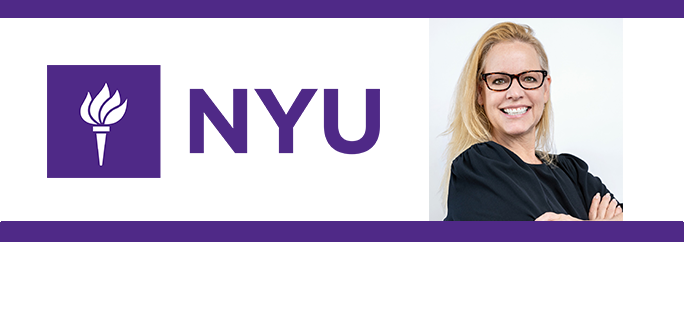 On New York University Week: Reducing the rising rate of preterm births is an important goal for the future.
On New York University Week: Reducing the rising rate of preterm births is an important goal for the future.
Laura Jelliffe-Pawlowski, professor of epidemiology and precision health at the Rory Meyers College of Nursing, looks into the data to find solutions.
Dr. Laura Jelliffe-Pawlowski is a Professor of Epidemiology and Precision Health at NYU Rory Meyers College of Nursing and an Emeritus Professor of Epidemiology and Biostatistics in the UCSF School of Medicine. She is the Founder and Lead of the International HOPE Research Consortium and Primary Investigator of the HOPE, PROMPT, and THRIVE studies. Her research focuses on identifying causes and interventions for preterm birth and adverse pregnancy outcomes with a focus on developing new tools, tests, and technologies with global applications. She has received funding from the NIH, the Bill & Melinda Gates Foundation, the March of Dimes, and UCSF’s California Preterm Birth Initiative, among others. With over 150 scientific papers and patents for predictive blood tests and algorithms, her work has been featured in the New York Times, The Atlantic, WIRED, CNN, NPR, BBC, and more. In 2023 she was recognized by Forbes on their 50 over 50 list of women leaders in innovation.
Preterm Births on the Rise
Preterm birth, or giving birth before 37 weeks of gestation, remains a leading cause of major health complications and death in infants and children. Despite medical advancements, rates of preterm birth continue to rise.
In a recent study of more than 5.4 million births in California, we examined rates and patterns of preterm birth. We also looked at patterns with respect to known risk factors.
Our study found that from 2011 to 2022, the rate of preterm birth across the state increased by 10.6% with some groups experiencing especially stark increases. For example, we found that the preterm births increased by nearly 50% in low-income Native American groups. We also found that rates in preterm birth differed dramatically across groups ranging from about 5.8% in White individuals with private insurance to 11.3% among Black individuals with public insurance.
We identified several factors that may be contributing to these trends. For example, rates in risk factors like having hypertension or diabetes present before pregnancy or having a mental health condition were found to have increased in most groups, sometimes by more than 50%.
Study data point to an urgent need to increase population-level understanding about preterm birth and its long-term impacts and to prioritize our focus on addressing actionable risk factors.
We know for example that taking low-dose aspirin can help reduce rates of preterm birth in those with hypertension or diabetes present before pregnancy but we also know that less than one in two people with these conditions take it. Changing this could go a long way towards reducing rates of preterm birth.
Read More:
[Forbes Profile] – Laura Jelliffe-Pawlowski
[NYU] – Preterm Births are on the Rise, with Ongoing Racial and Economic Gaps
[NBC News] – Existing newborn screenings may be able to identify risk of sudden infant death syndrome, study finds
[LA Times] – Blood test at birth could eventually identify babies at increased risk of SIDS

